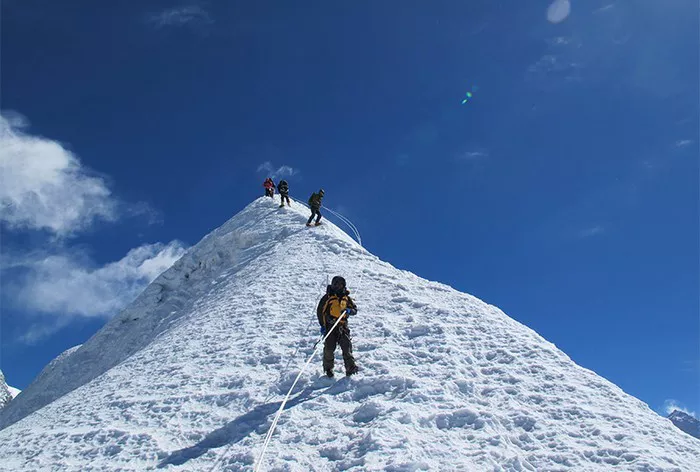In the realm of mountaineering, where the thrill of conquering towering peaks often goes hand in hand with extreme challenges, there exists a hidden gem for both novice and seasoned climbers alike—the easiest mountain to climb. While the allure of scaling majestic summits is undeniable, not everyone possesses the skills or experience to tackle formidable peaks such as Everest or K2. In this article, we will explore the appeal and significance of choosing the easiest mountain to climb, shedding light on a pathway that promises adventure, accomplishment, and the joy of the ascent.
The Allure of Simplicity
Embarking on a mountain climbing journey is an endeavor that demands physical strength, mental resilience, and technical expertise. For those new to the world of mountaineering, selecting the right mountain is crucial for a positive introduction to this exhilarating activity. Enter the easiest mountain to climb—a beacon of simplicity and accessibility that beckons aspiring adventurers.
Mountains like Mount Kosciuszko in Australia, Mount Elbrus in Russia, and Mount Kilimanjaro in Tanzania are renowned for their relatively straightforward routes and moderate altitudes. These peaks offer a perfect starting point for beginners, allowing them to experience the thrill of climbing without the overwhelming challenges that accompany more advanced ascents.
The Gateway to Adventure
Choosing the easiest mountain to climb does not equate to a diminished sense of adventure. On the contrary, these peaks serve as gateways to a world of exploration and discovery. Mountaineering is not solely about conquering the most challenging summits; it is also about immersing oneself in the awe-inspiring beauty of nature, experiencing diverse ecosystems, and relishing the sense of accomplishment that accompanies reaching a summit.
Mount Kosciuszko, standing at 2,228 meters (7,310 feet), offers climbers the opportunity to traverse the stunning landscapes of the Snowy Mountains in Australia. The ascent is characterized by well-maintained trails, providing a picturesque journey that showcases the unique flora and fauna of the region. Similarly, Mount Elbrus, the highest peak in Europe at 5,642 meters (18,510 feet), boasts breathtaking views of the Caucasus Range and the vast Russian landscape.
The Joy of Achievement
While seasoned climbers may seek the ultimate challenge on more demanding peaks, the easiest mountain to climb holds a distinct allure for its accessibility and the sense of accomplishment it offers. Scaling a mountain, regardless of its difficulty level, is a feat that instills a profound sense of achievement and self-discovery.
Mount Kilimanjaro, towering at 5,895 meters (19,341 feet), stands as the highest peak in Africa. The climb to its summit is a testament to one’s determination and resilience, as climbers navigate through various ecological zones, from lush rainforests to arctic-like landscapes near the top. The joy of standing at the highest point on the African continent is an experience that transcends the mountain’s relative ease of ascent.
Safety and Preparation
One of the key advantages of choosing the easiest mountain to climb is the enhanced focus on safety and the opportunity for climbers to hone their skills gradually. While these peaks may be less technically challenging, they still demand respect for the environment and adequate preparation.
Before embarking on any mountain climbing expedition, climbers should prioritize physical fitness and acclimatization to high altitudes. Proper gear, including sturdy hiking boots, insulated clothing, and essential safety equipment, is indispensable for a successful ascent. Additionally, obtaining guidance from experienced guides or joining organized tours can significantly enhance safety and ensure a more enjoyable climbing experience.
The Environmental Perspective
Opting for the easiest mountain to climb aligns with a growing awareness of environmental conservation and sustainable tourism. By choosing less challenging peaks, climbers can minimize their impact on delicate ecosystems, reducing the risk of environmental degradation associated with more heavily trafficked routes.
Mountains are fragile environments that require careful stewardship to preserve their natural beauty and biodiversity. Climbers ascending the easiest mountains play a role in promoting responsible tourism, leaving behind only footprints while contributing to the conservation of these pristine landscapes.
Conclusion
In the world of mountaineering, the easiest mountain to climb stands as a beacon for those seeking adventure, achievement, and a profound connection with nature. While more challenging peaks undoubtedly hold their own allure, beginners and enthusiasts alike can find a satisfying and enriching experience in ascending these accessible summits.
Mount Kosciuszko, Mount Elbrus, and Mount Kilimanjaro beckon with their own unique landscapes and challenges, providing climbers with a taste of the grandeur that defines mountain exploration. The joy of achievement, coupled with a focus on safety and environmental responsibility, makes these peaks not only the easiest but also some of the most rewarding to conquer.
So, whether you are a novice seeking your first taste of mountaineering or an experienced climber looking for a new adventure, consider the easiest mountain to climb as your next destination—a gateway to a world of exploration, achievement, and the timeless allure of the ascent.

